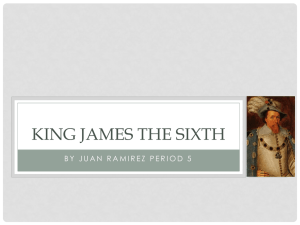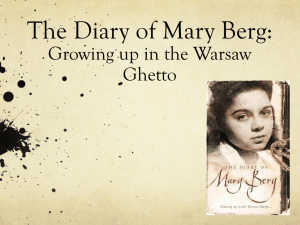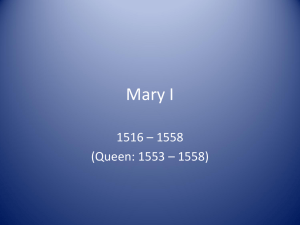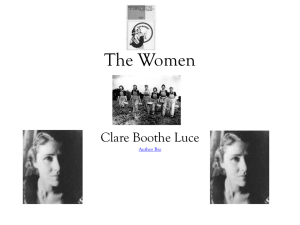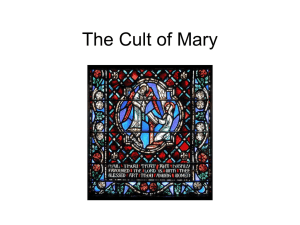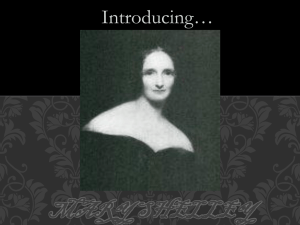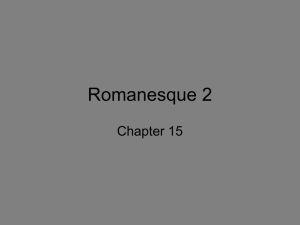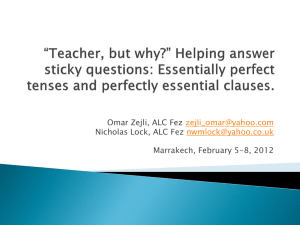mary reibey
advertisement
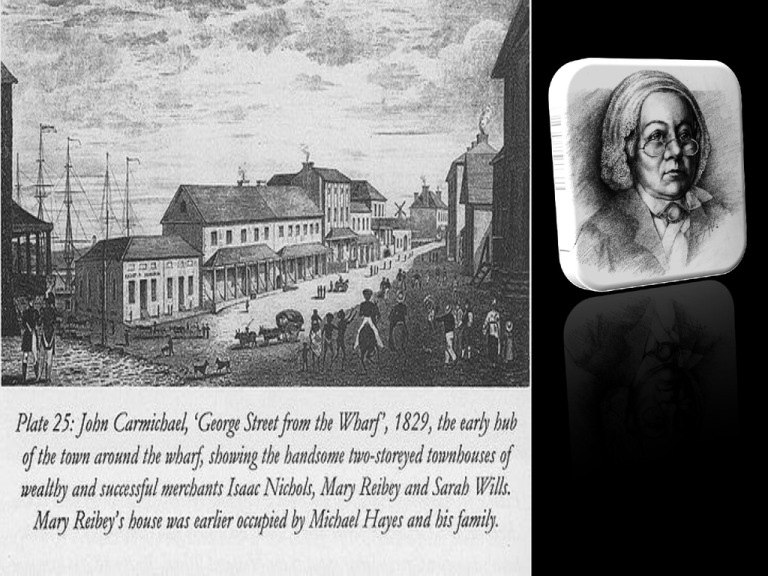
Background Alternatives name: Burrow, James (alias) Haydock, Molly (maiden name) Raby, Mary (alternative spelling) Raiby, Mary (alternative spelling) Birth: 12 May 1777 Location: Bury, Lancashire, England Died: 30 may 1855 Location: Newtown, Sydney, New South Wales, Australia Cultural heritage: English Occupation: business woman and convict Relationship: Reibey, Thomas (7 September 1794 – 5 April 1811) Arrived Sydney: 1792 Children: 7 , some are boys and some are girls Mary Reibey, baptized Molly Haydock, was born on 12 May 1777 in Bury, Lancashire, England as it says on the second slide. Following the death of her parents, Mary at a very young age and was raised by her reared grandmother and sent into service. She ran away and was arrested. She arrived in Sydney, Australia, on the royal admiral in October 1792. Mary Reibey was a businesswoman with interests in shipping and property. She meets a young fellow, Thomas Reibey, who she married at the age of 17 on 7 September 1794, a young Irishman in the service of the east India Co., whom she met in the transport and who had returned to Sydney in the Britannia that year and a junior officer. Thomas was granted land on the Hawkesbury River, where he and Mary lived and farmed following their marriage. By 1807, Thomas has bought a schooner for trading with the pacific islands. He felt ill after all his hard work a voyage to India in 1809; his heath never actually recovered, who died in 1811, Mary was left with seven children and control of a large business which included rural properties, bass strait sealing operations and overseas trading. Through enterprise and hard work she became one of the most successful businesswomen in the colony. In the eyes of her age group Mary Reibey gradually rose to respectability and affluence in the new emancipist society. She was a favorite of Governor Lachlan Macquari and opened a new warehouse in George Street in 1812 and in 1817 extended her shipping operations with the purchase of further vessels. By 1828, when she gradually retired from active involvement in business, she had acquired wide property holdings in the city. In 1820 she returned to England with her daughters. Returning to Sydney she began buying property, starting several building projects in the centre of town. Mary was quickly able to retire and live on her savings. In 1825, in recognition of her interest in church, education and charity, Mary was appointed one of the governors of the Free Grammar School. She settled in Newtown in her later years, where she lived until her death in 30 of May 1855. Five of her seven children had predeceased her. WHAT WAS HER CRIME? WHY DID SHE COMMIT THIS CRIME? Mary Reibey was arrested and convicted of stealing horse at Stafford on 21 July 1790 at the age of thirteen. She was transported to the colony of New South Wales as a convict to serve out her sentence in 1790 for 7 years. When arrested she was dressed as a boy and using an alias (James Burrow), however her identify was revealed during the trial and was 13 when she was sentenced. Landing in Sydney in 1792 she was assigned to a Major Francis Grose and given the duties of nursemaid in his household. She committed stealing horse because of childish prank and at the age of thirteen she must've no t known the rules as an orphaned girl and stealing a horse was a prank to her but to the rules it was a crime. The reason why she committed this crime wasn’t because anything that wanted her to give revenge or regret something back, it was a prank that she didn’t know it would lead to transporting 7 years to New South Wales. Mary Reibey being an orphanage as a young girl (1777-1855). Arrested for stealing a horse at the age of 13, she was tried - still disguised as a boy with the name of James Burrow - and sentenced to death. Her sentence to transportation for seven years to Australia, New South Wales in October 1792 I think the punishment that Mary Reibey faced and done sort of and sort of doesn’t matches the crime because first of all the crime she made, was all on a childish prank which I think she didn't really meant to do as it was a prank and being transported for seven years just for stealing a horse from a prank at the age of thirteen isn't what she expected and for seven years for stealing a horse must've mean that she did something more worse, anything that got her sent to the colony of New South Wales unless she stole more than one or two horses that lead to seven years, but on the other side I think it matches because she stole a horse which she doesn’t own and by the laws of punishment and crimes it illegal to steal as we still do now and when she was arrested she was disguised as a boy under the influence of James Burrow which she found attractive, and at the trial she was identified that she was a female which must’ve added more years and sentenced to death. Her sentence was later commuted to transportation to Australia which is why she was sent to this place that we live in now for 7 years for the crimes she made and that is why I think it does and does not matches (punishment & crime of Mary Reibey). Remembered by history Mary Reibey is remembered by the history, why? Because in recognition of her charity Mary Reibey is put on the front of Australian 20 dollar banknote. She is the only person in the whole history of the world that was convicted in crimes against property (or any other non-political crimes) and still her image on national currency. The $20 dollar note Once there she not only married and had seven children, but also became a highly successful and hugely wealthy businesswoman. In credit of her generous activities her portrait now appears on the Australian $20 note. Bibliography http://en.wikipedia.org/wiki/Mary_Reibey http://adbonline.anu.edu.au/biogs/A020327b.htm\ \http://wiki.answers.com/Q/What_made_Mary_Reiby_famous http://www.dictionaryofsydney.org/person/reibey_mary http://adbonline.anu.edu.au/biogs/A020327b.htm http://en.wikipedia.org/wiki/Convicts_in_Australia http://trove.nla.gov.au/people/610963?c=people http://www.worldlingo.com/ma/enwiki/en/Mary_Reibey Exam questions I'm still thinking… but for now ill give you one… Who was the only person in the whole history world that was convicted in crimes against property ? As you will find to this Answer on slide 7 ENG 2 O’Z Thank for watching … hope you liked my mini assignment that we had to do :D:D:D

